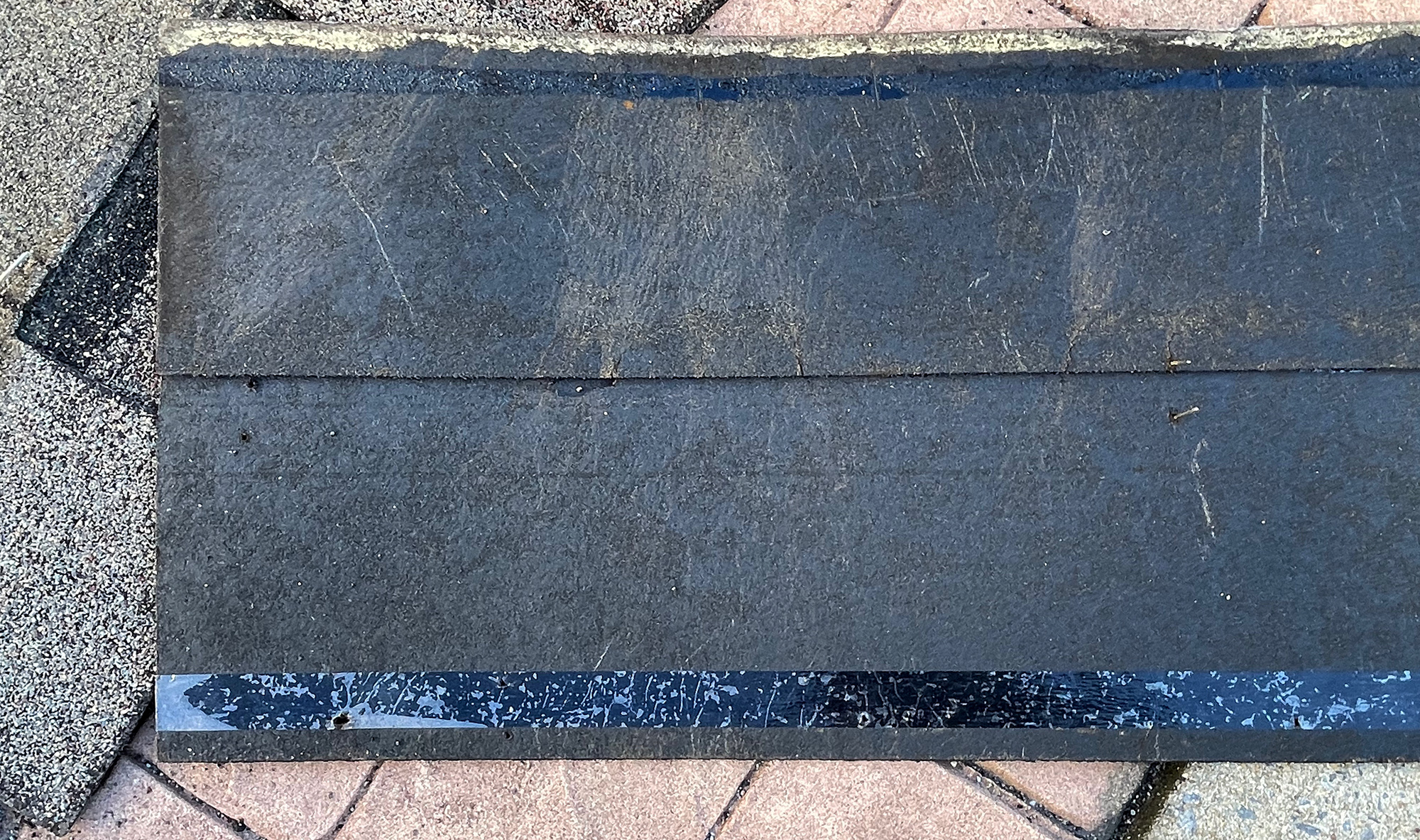Unsealed Shingle Corners
Wear and tear, it happens to everything as it ages, including roofing. During the examination of roofing, wear and tear need to be taken into account by the examiner for it can be mistaken for damage resulting from wind uplift. A common form of wear and tear observed to asphalt shingles is granular loss. But that is not the only form of wear and tear that occurs over the life of a shingle roof.
Asphalt shingles are manufactured with an adhesive strip on the face of the shingle that runs side-to-side, along the length and mid-height of the shingle face. A plastic strip is applied to the back face of the shingle so that during bundling, the plastic strip covers the location of the adhesive strip on the underlying shingle and prevents the bundled shingles from adhering together (Figure 1).

When placed on the roof, the shingles have an upslope over-lap, and the adhesive strip no longer aligns with the plastic strip, which results in the adhesive on the shingle face adhering to the rear face of the overlying shingles, bonding the shingles together. This bond between the shingles plays an important part in the roof system resisting wind uplift.
Shingles are exposed to extreme temperatures, as well as fluctuating temperatures during the transition between daytime and nighttime. Extreme temperatures on their own cause materials such as adhesives to degrade and over the life of shingle in use, they cause the adhesive to lose its adhesive properties.
Fluctuating temperatures experienced by the shingle also cause the shingle to expand or contract, depending on if the shingle is heating or cooling. According to the installation instructions published by multiple manufacturers of asphalt shingles, shingles should be installed in cross-slope, overlapping rows, with each row offset to the side, a short distance from the row below. This results in the shingles being installed with the shingle butt edges, staggered upslope at a diagonal. When the shingles are installed staggered in this manner, a shingle overlays two abutted shingles. One of the underlying shingles is overlapped for the majority of the shingle length, and one for a short distance. When contraction of the two underlying, abutted shingles occurs, the shingle butt edges move away from each other a small distance. This results in a tension pressure in the adhesive strip of the overlying shingle, along the full length of the adhesive strip, between the longer portion of the underlying shingle and the shorter. Due to its length, the longer portion of the adhesive strip has a higher resistance to the tension pressure than the shorter length. As the adhesive strip wears and loses its adhesive qualities, the shorter length of the adhesive strip can detach, and due to the loss of the bonding qualities of the adhesive strip, it will not rebond. This condition is exemplified on a roof by diagonal, upslope rows of unsealed shingle corners, which can be lifted with finger pressure.
The unsealed shingle corners have little to no resistance to wind uplift. Over time, the unsealed corners can be lifted by wind, applying a leveraging force on the remaining adhered portion of the shingle, and the worn adhesive of the shingle can detach along its full length, and not rebond. This condition is not considered damage, but the result of wear and tear. So, during roof examinations, wear and tear of the adhesive intended to bond lapped shingles together needs to be taken into account, to determine if the unsealed shingles and shingle corners are the result of wear and tear or wind uplift.
EDT engineers are experts at differentiating storm damage from the normal wear and tear of asphalt shingles. We stand ready to help when you are in need of an assessment as to which or if both are present.
About the Author
Kurt D Mulder, P.E. is an engineering manager and consulting engineer with our Birmingham Office. Mr. Mulder provides technical consultation related to construction evaluation of residential and commercial structures, failure analysis, evaluation of scope and cause of damage to structures, as well as water intrusion investigation. You may contact Kurt for your forensic engineering needs at kmulder@edtengineers.com or (205) 838-1040.
Learn about how EDT Forensic Engineering & Consulting approaches construction assessments, scope of damage, and forensic engineering by assigning a file today.

